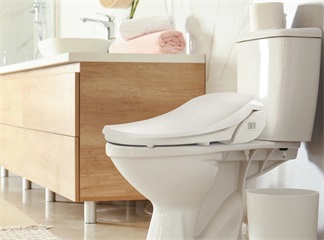
As spring blossoms with its vibrant energy, Oceanwell thoughtfully organized a heartwarming birthday celebration for its employees. This seasonal event not only carries the company's sincere wishes for its staff, but also vividly reflects Oceanwell's people-oriented corporate philosophy. Through carefully designed celebration activities, every employee could deeply feel the warmth and care of this big family. A Thoughtfully Arranged Celebration To ensure the birthday party was memorable, the organizing team meticulously decorated the venue with balloons, streamers, and festive lighting, creating a vibrant and cheerful ambiance. A beautifully crafted birthday cake took center stage, surrounded by an array of delicious snacks and beverages, catering to different tastes. The effort put into the setup demonstrated the company's appreciation for its employees and its dedication to making them feel valued. Interactive Games for Team Bonding Beyond the traditional cake-cutting ceremony, the event featured engaging team games to encourage interaction and laughter among colleagues. Activities such as trivia quizzes, team challenges, and lucky draws added excitement to the celebration. These games not only brought everyone closer but also reinforced teamwork and communication in a relaxed setting. Employee Recognition and Appreciation During the event, the management team expressed their gratitude to the employees for their hard work and contributions. Each birthday celebrant received a personalized gift as a token of appreciation. This gesture highlighted the company's commitment to recognizing individual efforts and fostering a supportive work environment. Strengthening Corporate Culture Oceanwell places great emphasis on employee well-being, regularly organizing activities such as birthday parties, festival celebrations, and team outings. These initiatives help build a strong corporate culture where employees feel connected and motivated. By prioritizing staff satisfaction, the company ensures long-term growth and a positive workplace atmosphere. As the birthday party concluded with smiles and group photos, employees left with a renewed sense of camaraderie and appreciation. Events like these not only celebrate special occasions but also reinforce the company's values of care, unity, and mutual respect. Looking ahead, Oceanwell will continue to introduce more employee engagement programs, ensuring that every team member feels valued and inspired to contribute to the company's success.

About Oceanwell Founded in 2004, Oceanwell specializes in the research, development, manufacturing, and sales of smart bathroom products and accessories, holding over 300 patents. The products are primarily sold to renowned brands in Europe and are widely used in bathroom facilities of residential homes, hotels, hospitals, and other buildings. PP & Urea Toilet Covers PP Covers: Lightweight, corrosion-resistant design with antibacterial properties for enhanced hygiene. Urea-Formaldehyde Covers: High-density, eco-friendly materials offering superior durability and heat resistance. Cabinet Cistern The cabinet water tank is a multifunctional, space-saving solution designed for modern bathrooms, seamlessly blending functionality with minimalist aesthetics. Furthermore, the cabinet water tank supports smart sensor compatibility, enabling touchless flushing and enhancing hygiene levels. Its customizable exterior panels can effortlessly integrate into bathroom decor, offering a perfect balance of innovation, sustainability, and style. Concealed Cisterns The Concealed Cistern redefines modern bathroom design with its space-saving, wall-mounted installation that seamlessly integrates into minimalist interiors. Constructed from high-strength, corrosion-resistant materials, the cistern is built to withstand humid environments, ensuring long-term durability. The modular design allows for easy maintenance and compatibility with smart sensors, enabling touchless flushing for enhanced hygiene. With a sleek, hidden profile and customizable panel options, the Concealed Cistern combines functionality, aesthetics, and eco-conscious innovation, making it a perfect choice for modern, sustainable bathrooms. Flush Plate The Flush Plate is a sleek, durable, and customizable interface enhancing modern bathrooms with dual-flush buttons, smart sensor compatibility, and easy installation. For media inquiries or partnership opportunities: Contact: Cloud Wu, Global Marketing Director Email: sales08@oceanwellxm.com Tel: +86-13605038522

The size of the washdown systems market has increased slightly in recent years, reports The Business Research Company. It is expected to expand from $2.57 billion in 2024 to $2.62 billion in 2025, at a compound annual growth rate (CAGR) of 1.7%. The growth during this historic period can be attributed to factors such as urbanization and infrastructure growth, water scarcity issues, consumer demand for innovative solutions, retrofit initiatives, and the appeal of cost-effectiveness and lasting savings. Experts predict that the flushing system market size will continue to rise in the next few years, and is expected to increase to US$2.97 billion by 2029, with a compound annual growth rate (CAGR) of 3.2%. The projected growth during the forecast period is attributed to various factors such as energy efficiency norms, customer preference for personalization, conversion to dual flush systems, market expansion in emerging regions, and eco-friendly building projects. Welcome to contact us for more about flushing system.

The UK smart toilet market size is estimated at USD 544.7 million in 2024 and is expected to grow at a CAGR of 9.2% from 2025 to 2030. The growth is attributed to the growing awareness about health and hygiene among consumers in the country. Furthermore, rapid technological advancements such as smart home integration, remote control, and contactless operation are also driving the market expansion. Rapid urbanization and home modernization are driving the popularity of smart home toilets. The country’s growing environmental concerns have created a high demand for this product. Smart toilets often come with advanced features such as water conservation. In addition, the government has introduced supportive regulations and initiatives such as sanitation and water conservation. Water efficiency regulations in the UK encourage the use of water-saving devices, including smart toilets, to promote sustainable water management and reduce water consumption.

Today is the Lantern Festival, also called Shangyuan Festival, is a Chinese traditional festival celebrated on the fifteenth day of the first month in the lunisolar Chinese calendar, during the full moon. We have come back to office. May the year of Snake bring you good health and prosperity.

To celebrate the Chinese New Year, Oceanwell will be on holiday from Jan. 25th to Feb. 9th. Chinese New Year, also known as the Lunar New Year, is the largest and most important traditional festival for the Chinese people. Just like Christmas in the West, Chinese New Year is a time for family reunion. A New Year means a brand-new chapter. We at Oceanwell may you have good luck and greater success in the coming year, may the New Year outshine the past and wishing you all the blessings of a beautiful season.
Categories
New Products
Intelligent DUSCH WC shower bidet Toilet seat white bidet toilet seat in rimless Design Read More
Intelligent shower toilet Bidet Seat white and black color German style Read More
Top quality PP Material waterproof shower seat cushion plastic seats Read More
Electronic Toilet Booster seat for Agedcare Disabled healthcare Read More
Aged care Disabled Healthcare equipment Electric Toilet Lifter Read More

Copyright © 2025 Oceanwell(Xiamen)Industrial Co.,Ltd. All Rights Reserved.

IPv6 network supported